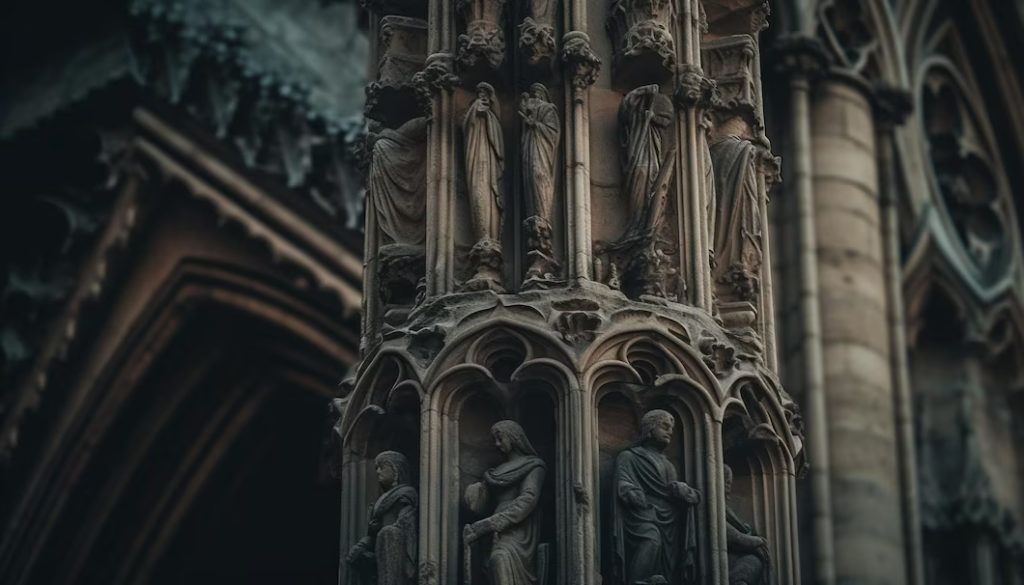Philadelphia is a city that has been shaped by history, with its architecture honoring the past while also embracing the future. From the iconic landmarks that attract tourists from all over the world to the modern structures that define its skyline, Philadelphia’s architectural designs are truly remarkable. But what sets it apart is how these designs have influenced other cities across the globe. In this blog, we will take you on a journey through Philadelphia’s history and its influence on architectural design. We will explore some of the most iconic landmarks in Philly, such as Independence Hall and the Philadelphia Museum of Art, as well as modern structures like One Liberty Place, which has been compared to the Chrysler building in New York City, and Comcast Innovation and Technology Center. Join us as we discover how Philly’s rich culture has influenced architecture around the world, and why you need to start paying attention to this city’s impact on design.
The Influence of Philadelphia’s History on Its Architecture
Philadelphia’s architectural designs bear the indelible marks of the city’s rich historical context. As one of the birthplaces of America, Philadelphia’s architectural heritage serves as a powerful reflection of its pivotal role in the American Revolution and the founding of the nation itself. Over time, the city has witnessed an evolution in its architectural styles, with diverse influences shaping its design landscape. From the traditional Georgian style to modern innovations, Philadelphia blends tradition with contemporary elements in its architectural designs. The city’s iconic landmarks, such as City Hall and the PSFS Building, stand as constant reminders of its historical significance. By seamlessly integrating the past with the present, Philadelphia’s architectural designs capture the essence of the city’s vibrant history. Christ Church in Old City is one of the oldest churches and buildings in Philly, adding to the city’s rich architectural tapestry.

Understanding the Historical Context of Philadelphia
Philadelphia’s architectural landscape reflects its rich history and diverse influences, including the Regency Style in London. From Georgian to Victorian Gothic, each style represents a different era, showcasing the city’s evolution. Rooted in the Colonial Revival movement, Philadelphia’s designs pay homage to architects like Frank Furness and Louis Kahn. Historical sites like Independence Hall inspire architectural designs that capture the spirit of the American Revolution. To understand Philadelphia’s architectural history, explore its museums and cultural institutions. The city’s designs blend tradition with innovation, creating a captivating legacy.
Iconic Architectural Landmarks in Philadelphia
Philadelphia is home to several iconic architectural landmarks that showcase the city’s rich history and diverse architectural styles. The Philadelphia Museum of Art stands as a testament to the city’s cultural significance, blending international and American architectural influences. Independence Hall, a UNESCO World Heritage Site, is an emblem of American democracy and the birthplace of the nation. The Fisher Fine Arts Library, with its stunning Beaux-Arts style, is a masterpiece of architectural design. 30th Street Station, a grand railway station, exemplifies both grandeur and functionality in its architecture. And the modern skyscraper, Cira Centre, adds to Philadelphia’s evolving skyline. These landmarks not only represent the city’s historical and cultural heritage but also serve as architectural inspirations for cities across America and around the world, including the post-World War II development projects in Philadelphia.
Philadelphia Museum of Art
Immerse yourself in the captivating world of art at the Philadelphia Museum of Art, located on the Benjamin Franklin Parkway. This iconic institution boasts an extensive collection that spans various artistic periods, providing visitors with a truly enriching experience. Its neoclassical façade, inspired by ancient Greek and Roman architecture, adds a touch of grandeur to the city’s skyline. You may recognize the museum’s famous steps from the movie “Rocky,” adding a sense of excitement and familiarity to your visit. Inside, you’ll find galleries that showcase diverse architectural layouts and design elements, creating a dynamic and immersive environment. The Philadelphia Museum of Art holds its own among the city’s architectural wonders, including the Barnes Foundation on the Ben Franklin Parkway, making it a must-visit destination for art enthusiasts and history buffs alike.
Independence Hall
Independence Hall is where momentous events in American history unfolded. It served as the backdrop for the debates and adoptions of both the Declaration of Independence and the U.S. Constitution. The architectural style of Independence Hall, with its Georgian influences, reflects the ideals and aspirations that characterized the American Revolutionary period. Standing tall and proud, its steeple has become a symbol of freedom and independence. Visitors can delve into the rich historical significance of Independence Hall through guided tours, immersing themselves in the essence of America’s beginnings. As they explore the building’s interior, they encounter authentic period furniture and artifacts from the time of the Founding Fathers. Independence Hall offers a captivating journey back in time, allowing visitors to witness firsthand the birthplace of a nation. Fun fact: The original designs of Independence Hall did not include a steeple—this was added in 1750 before it moved to Washington.

Fisher Fine Arts Library
The Fisher Fine Arts Library, designed by the renowned architect Frank Furness, is a true architectural gem. Its Victorian Gothic style façade showcases intricate details, while the interior seamlessly combines functionality and decorative elements. The design of the library prioritizes natural light, with large windows and skylights flooding the space with brightness. This unique blend of aesthetics and practicality makes the Fisher Fine Arts Library an ideal hub for both artistic and academic inspiration. Situated in the vibrant city of Philadelphia, with its rich history and architectural influences, the library stands as a testament to the city’s commitment to preserving and promoting the arts. Its presence, along with other notable architectural landmarks such as the Barnes Foundation, adds to the vibrant cultural landscape of Philadelphia, making it an absolute must-visit for anyone interested in architectural design influences from the city’s history.
30th Street Station
Immerse yourself in the architectural splendor of Philadelphia with a visit to the iconic 30th Street Station. This magnificent transportation hub showcases the grandeur of Beaux-Arts architecture, leaving visitors in awe of its timeless beauty. As you step into the station’s grand entrance hall, your eyes will be drawn to the stunning barrel-vaulted ceiling that stretches above you, creating an atmosphere of elegance and sophistication. The architectural design effortlessly combines classical elements, such as majestic columns and intricate ornate details, transporting you back to a bygone era of artistic excellence. Beyond its aesthetic appeal, 30th Street Station serves as a vital link, connecting Philadelphia with other major cities, and has been featured in numerous films and television shows, adding to its allure. Don’t miss the chance to experience this architectural masterpiece firsthand and witness the harmonious blend of history, functionality, anderson, that defines 30th Street Station.
Cira Centre
With its sleek lines and glass exterior in the International Style, Cira Centre stands tall, making a striking statement in Philadelphia’s skyline. This modern skyscraper embodies contemporary architectural innovation, showcasing the city’s commitment to pushing boundaries. The design of Cira Centre goes beyond aesthetics, prioritizing sustainability through its green roof and energy-efficient features. Located near the scenic Schuylkill River, the building not only adds to the city’s visual appeal but also seamlessly integrates with its surroundings. Cira Centre stands as a testament to Philadelphia’s ability to embrace modernity while respecting its historical context in Center City. As the city continues to evolve, structures like Cira Centre inspire new possibilities for architectural design, influencing not only Philadelphia but also cities around the world.
Residential Architectural Designs in Philadelphia
Philadelphia boasts a diverse range of residential architectural designs that contribute to its unique character and sense of community. The city’s neighborhoods showcase row houses, reflecting its 19th-century heritage and adding to its historic charm. These residential areas blend the elegance of Victorian, Georgian, and Colonial Revival styles with modern amenities, offering residents the best of both worlds. From the classic beauty of Victorian homes to the timeless appeal of Georgian architecture, Philadelphia’s residential designs, including Chestnut Hill, embody the city’s rich history and architectural legacy. Whether you’re strolling along Market Street or exploring University City, you’ll be immersed in a tapestry of architectural styles that tell the story of Philadelphia’s past while accommodating the needs of today’s residents. Philly’s residential architectural designs are a testament to the city’s architectural prowess and its ability to blend history with modernity, making it an ideal place to call home.

Vanna Venturi House
The Vanna Venturi House, designed by Robert Venturi, stands as an iconic architectural marvel in Philadelphia. With its postmodern style, this house challenges traditional notions of architectural design, making it a true standout in the city. The playful and unconventional elements on the façade of the Vanna Venturi House add to its uniqueness and artistic appeal. Inside, the house showcases a perfect balance between form and function. It is a testament to Philadelphia’s influence on architectural innovation, showcasing the city’s rich history and the impact it has had on shaping the world of architecture. The Vanna Venturi House is a must-see for anyone interested in exploring the diversity and creativity that Philadelphia has to offer.
Margaret Esherick House
Designed by renowned architect Robert Venturi in the 1960s, the Margaret Esherick House stands as a testament to the rejection of modernist architectural style. This unique residence, known for its distinctive facade and art deco elements, showcases the importance of functionality and individuality in design. By challenging conventional norms, Venturi paved the way for a new wave of postmodern architecture in the United States. The Margaret Esherick House’s influence can be seen in the incorporation of playful and unconventional elements in contemporary architectural designs. With its intriguing blend of form and function, this house has left an indelible mark on the architectural landscape, not just in Philadelphia, but across the entire country. The house features a flat roof, reminiscent of the modernist style, and a wall of windows in the two-story living room, allowing for ample natural light to flood the space.
How have these architectural designs influenced other cities?
Philadelphia’s architectural designs have left a lasting impact on cities worldwide. The city’s unique blend of historic and modern styles has inspired architects globally, with other cities incorporating elements of Philadelphia’s designs. Its emphasis on functionality and individuality has shaped the field of architecture, making Philadelphia a recognized center of innovation and creativity.
The Global Impact of Philadelphia’s Architecture
Philadelphia’s architecture serves as a testament to the city’s influence on the global stage. From the 19th century to the early 20th century, architects from around the world have sought inspiration from Philadelphia’s innovative designs. The city’s architectural heritage, with its Georgian style and Art Deco details, has left an indelible mark on the field. Cities like New York, Chicago, and Paris have incorporated elements of Philadelphia’s architectural aesthetic into their own skylines. From the PSFS Building to City Hall, the impact of Philadelphia’s architecture can be seen in iconic structures across the globe, including France. Today, Philadelphia continues to be recognized as a center of architectural innovation, shaping the built environment worldwide.
Conclusion
Philadelphia’s rich history has had a profound impact on its architectural design. From iconic landmarks to innovative residential structures, the city’s architecture tells a story of its past and influences the future of design. The Philadelphia Museum of Art stands as a testament to the city’s artistic heritage, while Independence Hall symbolizes the birthplace of American democracy. Modern structures like the Comcast Innovation and Technology Center showcase the city’s commitment to innovation. But Philadelphia’s influence extends beyond its borders, inspiring architectural designs in cities worldwide. The city’s architectural legacy serves as a reminder of the power of history and culture in shaping our built environment. As we appreciate the architectural wonders of Philadelphia, let us also celebrate the global impact of its design and continue to be inspired by its rich heritage.







